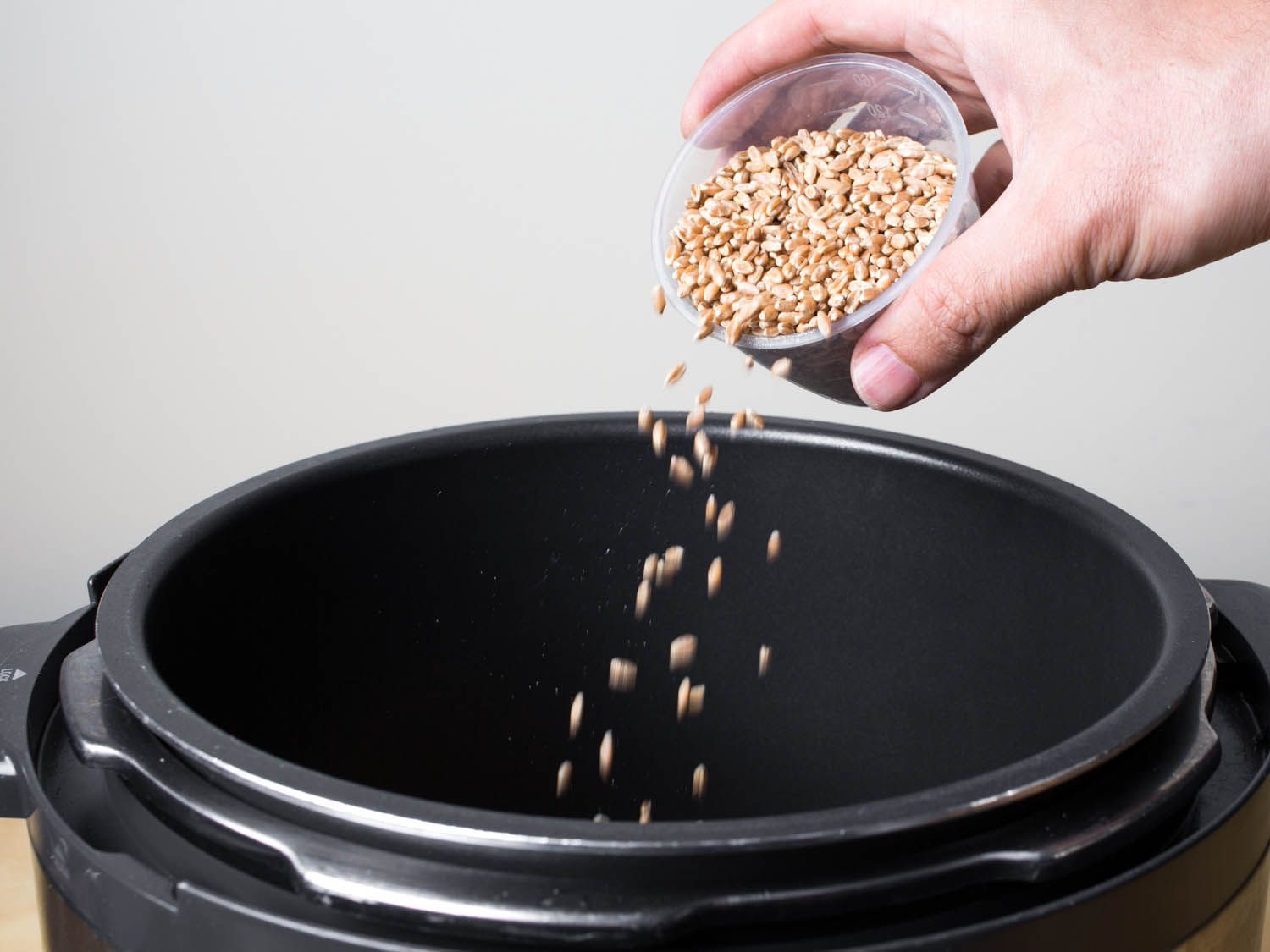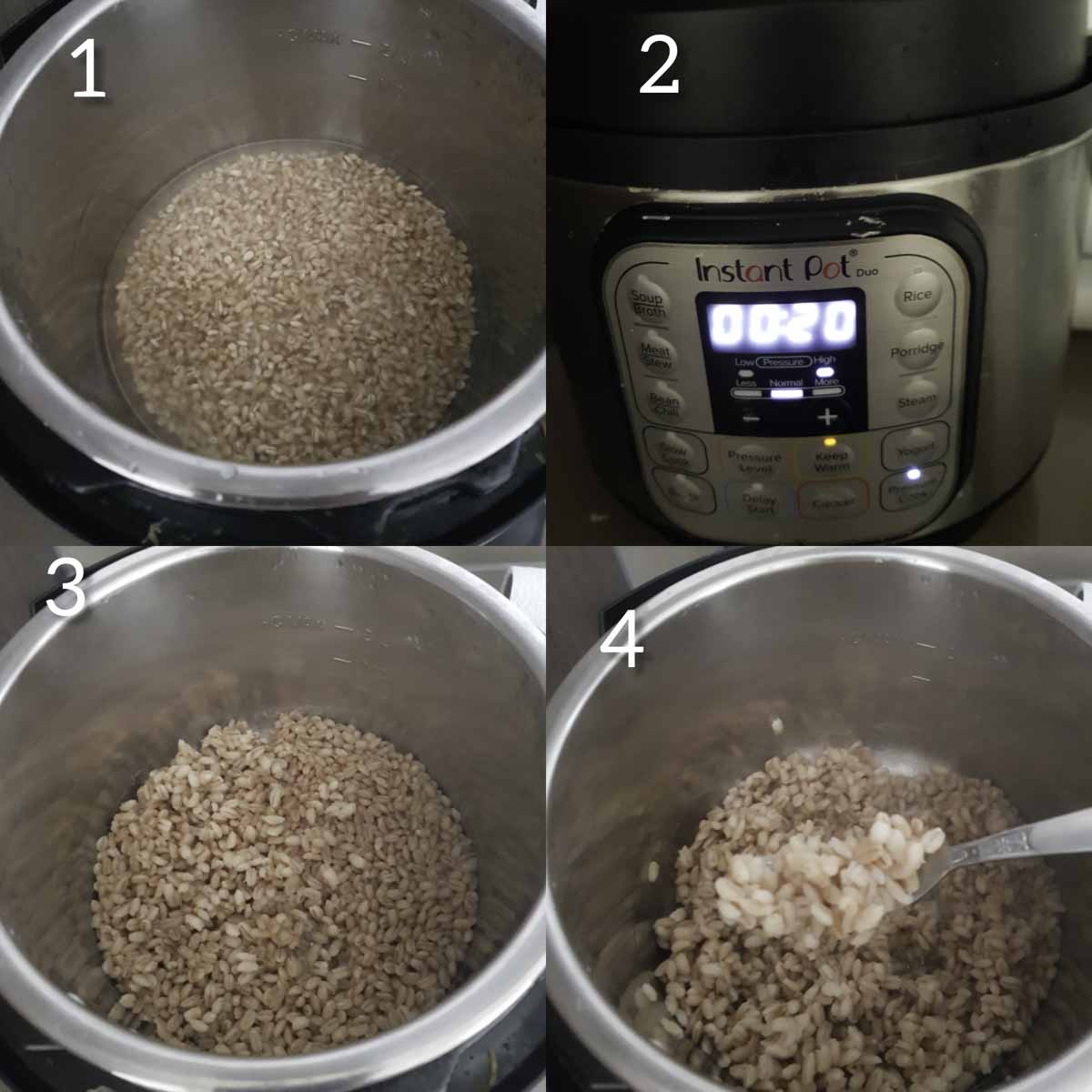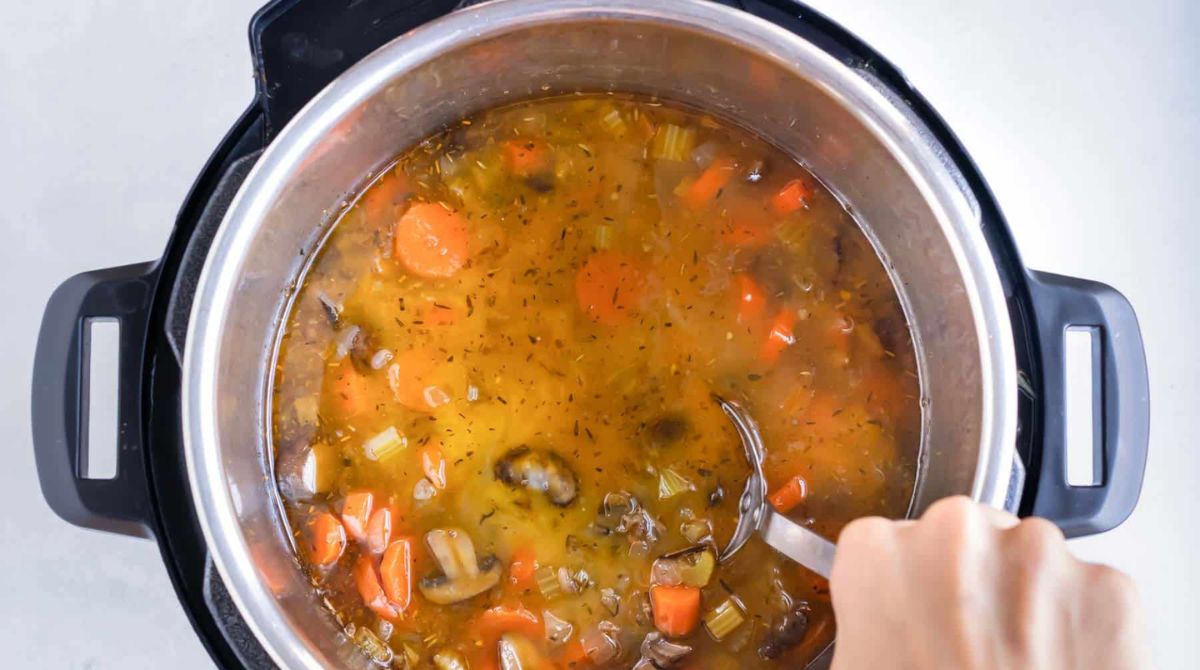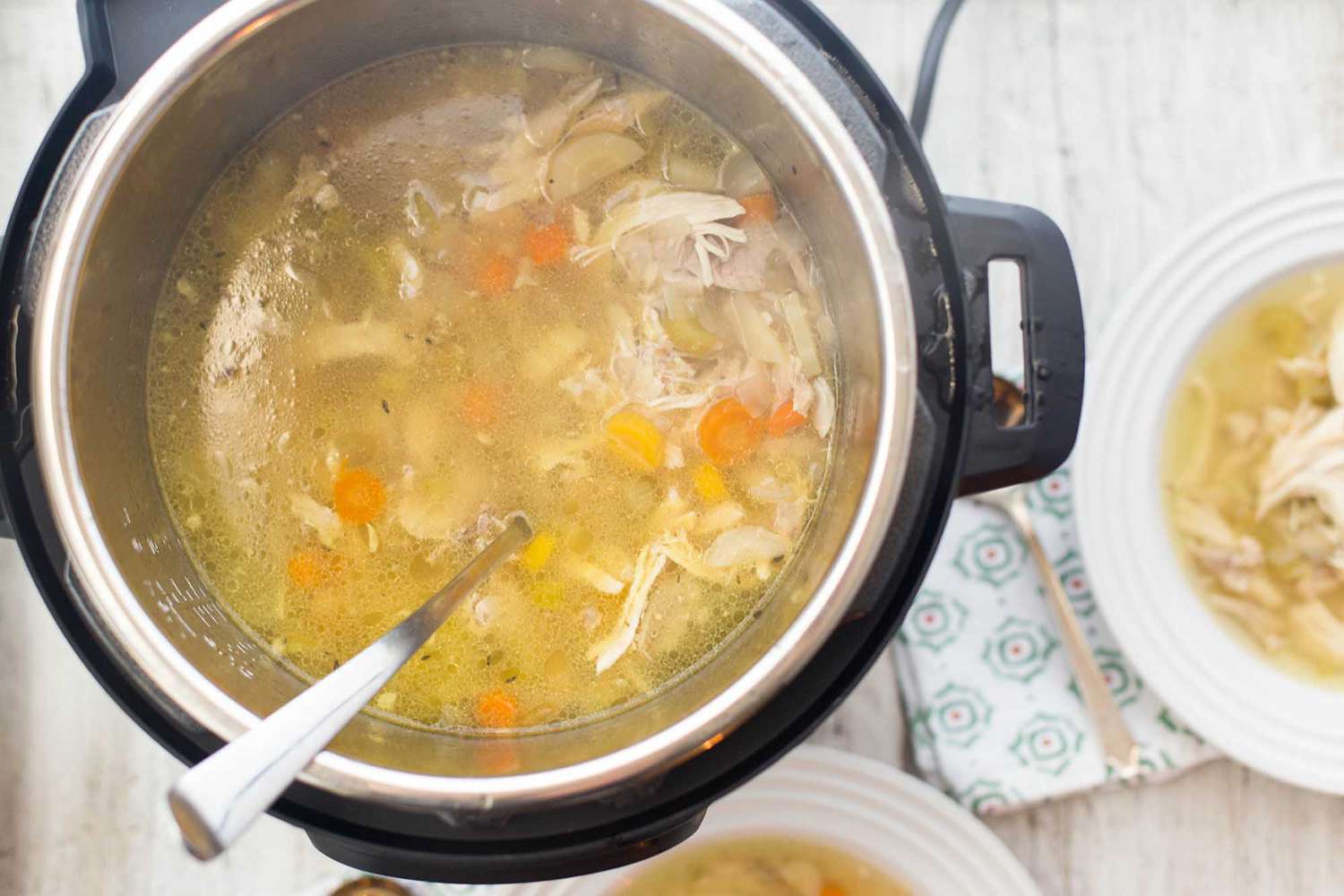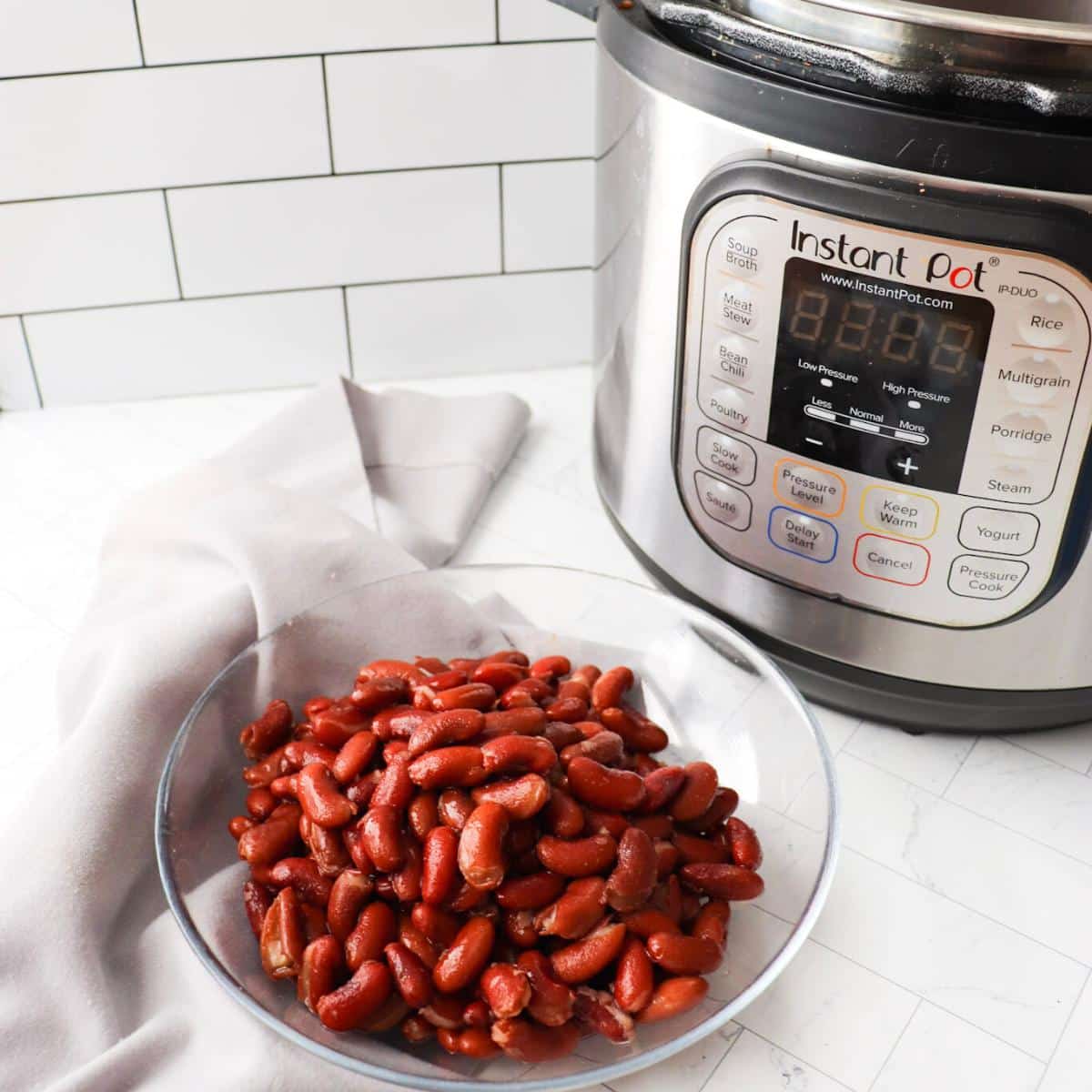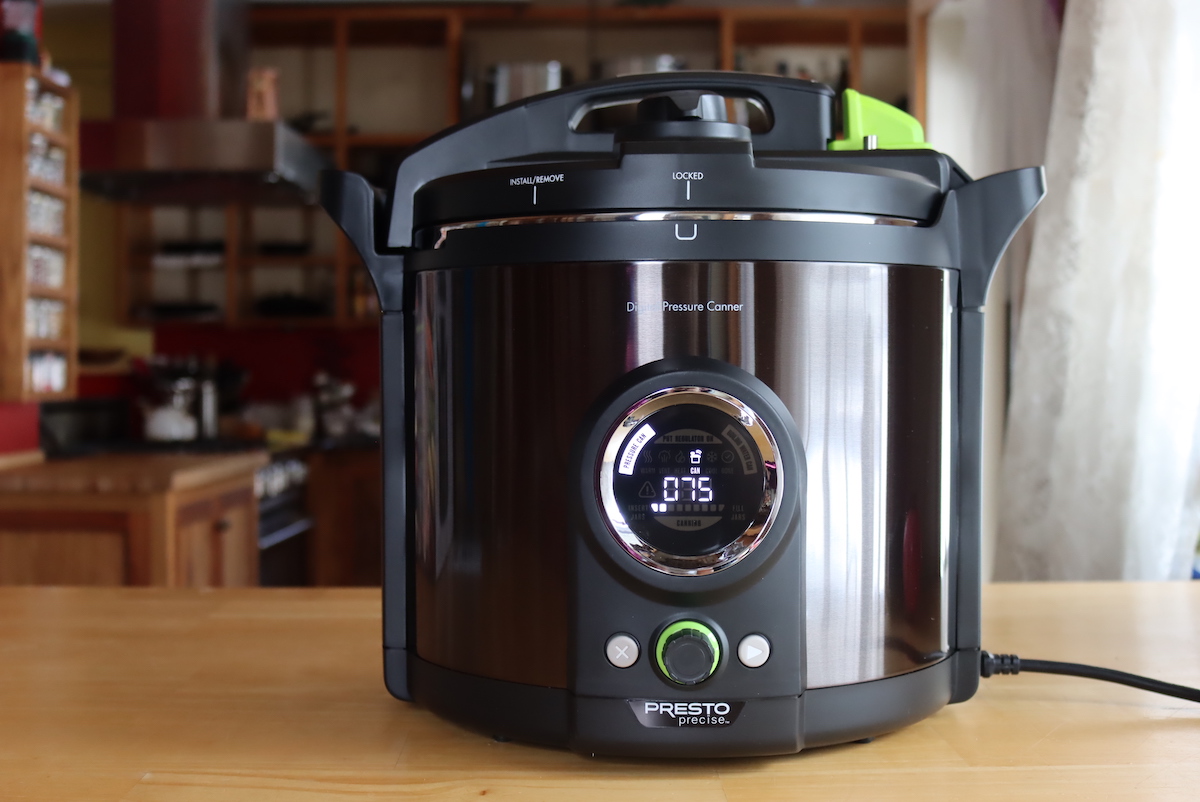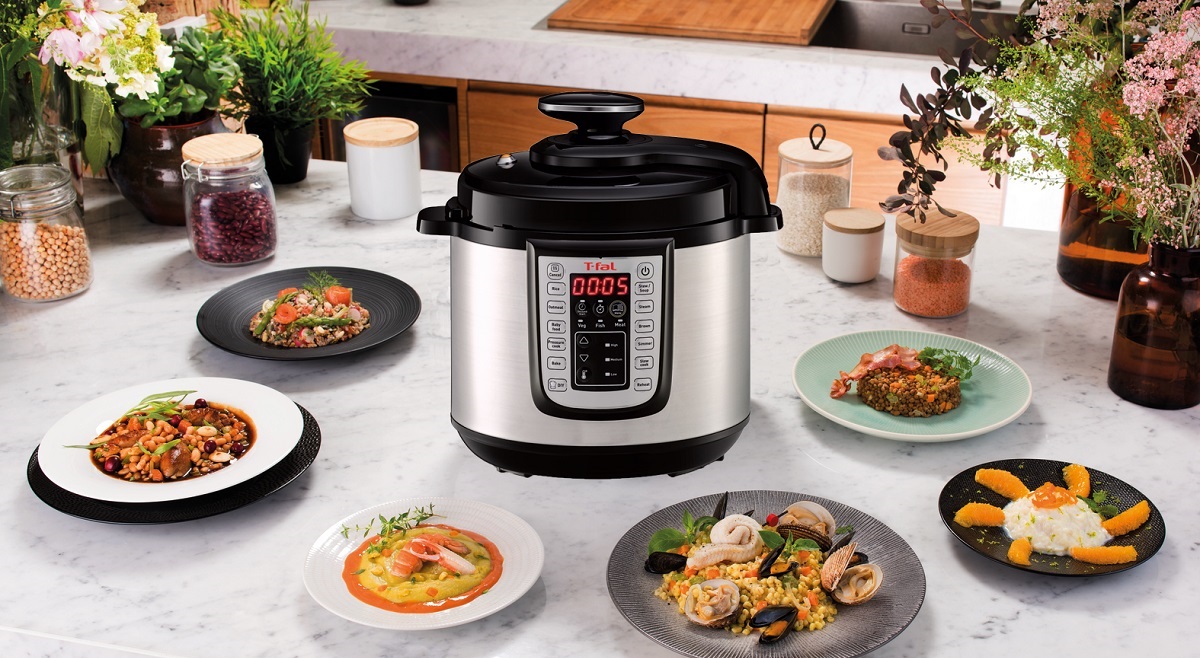Introduction
When it comes to cooking barley, using an electric pressure cooker can be a game-changer. This versatile kitchen appliance not only saves time but also delivers perfectly cooked barley with minimal effort. Whether you are a seasoned cook or a beginner, learning how to cook barley in an electric pressure cooker is a skill worth mastering.
Barley, a nutritious whole grain, has gained popularity in recent years due to its numerous health benefits. It is high in fiber, vitamins, and minerals, making it a great addition to a balanced diet. Incorporating barley into your meals can help promote digestive health, regulate blood sugar levels, and support weight loss.
Using an electric pressure cooker to cook barley has several advantages. First and foremost, it significantly reduces the cooking time. Traditional stovetop simmering can take up to an hour, but with an electric pressure cooker, the cooking time can be cut in half or even more. This is especially helpful when you’re short on time or looking for a quick weeknight meal option.
Another benefit of using an electric pressure cooker is its ability to retain the flavor and nutrients of the barley. The sealed cooking environment allows the barley to cook in its natural juices, resulting in a more flavorful and nutritious end product. It also helps to preserve the integrity of the grain, preventing it from becoming mushy or overcooked.
Additionally, electric pressure cookers are known for their convenience and ease of use. With just a few simple steps, you can have perfectly cooked barley ready to be used in a variety of dishes, such as salads, soups, stews, and pilafs. Whether you’re a busy professional, a parent juggling multiple responsibilities, or simply someone who appreciates efficiency in the kitchen, an electric pressure cooker can be a valuable tool.
In this article, we will guide you through the process of cooking barley in an electric pressure cooker. We’ll discuss the different types of barley, share preparation tips, provide a step-by-step guide, suggest cooking times, offer tips for achieving the perfect texture, and even provide flavoring and serving suggestions. By the end, you’ll be equipped with all the knowledge you need to confidently cook barley in your electric pressure cooker.
Benefits of Cooking Barley in an Electric Pressure Cooker
Cooking barley in an electric pressure cooker offers a multitude of benefits that make it a worthwhile cooking method to consider. Here are some key advantages:
1. Time-Saving: One of the greatest benefits of using an electric pressure cooker for cooking barley is the significant reduction in cooking time. Unlike traditional stovetop methods that can take up to an hour, an electric pressure cooker can cook barley in a fraction of the time, often in under 30 minutes. This is especially advantageous for busy individuals or families seeking quick and convenient meal solutions.
2. Retains Nutritional Value: The sealed environment of an electric pressure cooker helps trap and retain the nutrients present in barley. By cooking the grain under high pressure and heat, important vitamins, minerals, and antioxidants are preserved, ensuring that your dishes are packed with nutritional benefits.
3. Enhanced Flavor: The pressurized environment of an electric pressure cooker not only speeds up the cooking process but also helps intensify the flavors of the barley. The steam and moisture generated infuse the grain, resulting in a richer and more robust taste compared to traditional cooking methods.
4. Consistent Results: With an electric pressure cooker, you can achieve consistently cooked barley with each use. The precise temperature control and even heat distribution eliminate the guesswork and ensure that your barley turns out perfectly tender every time.
5. Versatility: Electric pressure cookers are incredibly versatile appliances, allowing you to cook a wide range of dishes beyond just plain barley. You can easily transform cooked barley into pilafs, salads, soups, risottos, or even use it as a healthy side dish for various meals.
6. Energy Efficient: Electric pressure cookers are designed to work efficiently while consuming less energy compared to conventional cooking methods. This makes them an eco-friendly option that not only saves you time but also reduces your carbon footprint in the kitchen.
7. Ease of Use: Operating an electric pressure cooker is simple and straightforward. Most models come with intuitive controls and pre-set cooking programs, making it easy to select the appropriate settings for cooking barley. Additionally, the automated pressure release feature ensures safety and convenience.
By taking advantage of these benefits, cooking barley in an electric pressure cooker can revolutionize your meal preparation and help you incorporate this nutritious grain into your diet more frequently.
Choosing the Right Barley and Preparation Tips
Before you begin cooking barley in your electric pressure cooker, it’s important to choose the right type of barley and follow a few preparation tips to ensure optimal results. Here’s what you need to know:
1. Selecting the Barley: There are several varieties of barley available, including pearl barley, hulled barley, and quick-cooking barley. Pearl barley is the most common and widely available type. It has been polished to remove the outer bran layer, resulting in a smooth texture and shorter cooking time. Hulled barley is less processed, still retaining the outer bran layer, and offers a chewier texture. Quick-cooking barley has been pre-steamed and then dried, further reducing the cooking time. Choose the variety that best suits your preferences and recipe requirements.
2. Rinse and Soak: Regardless of the type of barley you choose, it’s recommended to rinse it thoroughly under cold water before cooking. This helps remove any impurities or dust particles. While soaking is not mandatory for most varieties of barley, you can soak it for a few hours or overnight to reduce the cooking time and improve digestibility.
3. Ratios and Liquid Amount: Measure the barley and water ratio according to the specific type and the desired texture. As a general guideline, use 1 cup of barley to 2 cups of liquid, such as water or broth. However, if you prefer a softer or creamier texture, you can increase the liquid to 2.5 cups. Adjust the liquid amount based on your personal preference and recipe requirements.
4. Flavor Enhancements: While plain cooked barley is delicious on its own, you can enhance its flavor by adding seasonings, herbs, or vegetables to the cooking liquid. This can infuse the barley with additional taste and elevate your final dish. Experiment with different flavor combinations to suit your palate.
5. Preheating the Pressure Cooker: Preheating the electric pressure cooker before adding the barley can help ensure even cooking. Simply select the sauté function on your pressure cooker and heat a small amount of oil or butter. Add the rinsed barley and sauté for a few minutes until lightly toasted before proceeding with the pressure cooking step.
6. Follow Manufacturer’s Instructions: It is essential to consult the user manual of your specific electric pressure cooker for any model-specific guidelines or recommendations. Each appliance may have its own instructions regarding minimum liquid requirements, cooking time adjustments, and maximum fill levels. Following these instructions will help you achieve the best results.
By following these tips, you can ensure that your barley is properly prepared and ready for the pressure cooking process. This will help you achieve consistent and delicious results every time you use your electric pressure cooker to cook barley.
Cooking Barley in an Electric Pressure Cooker: Step-by-Step Guide
To cook barley in an electric pressure cooker, follow these simple steps for a hassle-free and delicious result:
Step 1: Rinse the Barley
Before cooking, rinse the barley under cold water to remove any impurities or dust particles. This step is crucial for ensuring clean and perfectly cooked barley.
Step 2: Add Barley and Liquid
Place the rinsed barley in the electric pressure cooker and add the appropriate amount of liquid. As a general guideline, use a 1:2 ratio of barley to liquid. For a creamier texture, increase the liquid ratio to 1:2.5. You can use water, broth, or any other cooking liquid of your choice.
Step 3: Lock the Lid and Set the Pressure
Securely lock the lid of the electric pressure cooker in place. Set the pressure release valve to the sealed position. Consult your specific cooker’s manual for instructions on adjusting the pressure level if needed.
Step 4: Select the Cooking Time
Choose the appropriate cooking time for your type of barley. Generally, pearl barley will require around 15-18 minutes of cooking time, while hulled barley may need 22-25 minutes. Quick-cooking barley will be ready in around 8-10 minutes. Adjust the cooking time based on your desired texture and the recommendations of your electric pressure cooker’s manual.
Step 5: Start Cooking
Press the “Start” or “Cook” button on your electric pressure cooker to begin the cooking process. The cooker will take some time to reach the desired pressure level before the actual cooking begins. Once the cooking starts, the pressure indicator will rise, and the countdown timer will commence.
Step 6: Natural or Quick Release
After the cooking time is complete, you have two options for releasing the pressure: natural release or quick release. For natural release, allow the pressure to release slowly over time. This can take about 10–15 minutes. For quick release, carefully move the pressure release valve to the venting position. Be cautious of the hot steam and use a long spoon or tongs to avoid any burns.
Step 7: Fluff and Serve
Once the pressure has been released, carefully open the lid, and fluff the cooked barley with a fork. This will separate the grains and prevent clumping. Your perfectly cooked barley is now ready to be served or used in your favorite recipes.
By following these step-by-step instructions, you’ll be able to consistently achieve tender and flavorful barley using your electric pressure cooker. Experiment with different cooking times and ratios to find the perfect balance for your preferences.
Cooking Time for Different Types of Barley
When cooking barley in an electric pressure cooker, the cooking time may vary depending on the type of barley you are using. Here are some general guidelines for cooking different types of barley:
Pearl Barley: Pearl barley is the most common type of barley and is often readily available. It has been polished to remove the outer bran layer, resulting in a smooth texture and shorter cooking time. When cooking pearl barley in an electric pressure cooker, it typically takes around 15 to 18 minutes.
Hulled Barley: Hulled barley is less processed than pearl barley, as it retains the outer bran layer. It offers a chewier texture and takes a bit longer to cook. In an electric pressure cooker, hulled barley generally requires approximately 22 to 25 minutes of cooking time.
Quick-Cooking Barley: Quick-cooking barley has been partially steamed and then dried, which significantly reduces its cooking time. This type of barley is a great option for those looking for a quicker cooking process. In an electric pressure cooker, quick-cooking barley typically cooks in around 8 to 10 minutes.
It is important to note that cooking times may vary based on the specific make and model of your electric pressure cooker. Additionally, personal preferences for texture and tenderness may affect the desired cooking time.
When cooking barley, always consult the user manual of your electric pressure cooker for recommended cooking times. Manufacturers often provide specific guidelines to ensure optimal cooking results. It is also advisable to perform a quick online search or refer to reliable cooking resources for more precise cooking time recommendations based on your electric pressure cooker model.
Keep in mind that these cooking times are based on typical electric pressure cooker settings. High altitude locations may require adjustments to cooking times, as pressure cooker cooking times can be affected by altitude. Experimenting with the cooking times and ratios will help you achieve the desired texture and tenderness of the barley that suits your taste.
By understanding the general cooking times for different types of barley and making adjustments based on your electric pressure cooker and personal preference, you can enjoy perfectly cooked and delicious barley with ease.
Tips for Achieving the Perfect Texture
Cooking barley to the perfect texture is key to enjoying a delicious and satisfying dish. Here are some tips to help you achieve the desired texture when cooking barley in an electric pressure cooker:
1. Liquid Ratio: The amount of liquid used when cooking barley plays a significant role in determining its texture. For a more tender and softer texture, increase the amount of liquid to barley ratio. This will allow the grains to absorb more moisture and result in a creamier consistency. On the other hand, if you prefer a chewier texture, reduce the liquid ratio slightly.
2. Cooking Time Adjustments: The cooking time specified for each type of barley is a general guideline. Depending on your preferences, you can adjust the cooking time to achieve the desired texture. For a softer and more well-cooked barley, increase the cooking time by a few minutes. Alternatively, if you prefer a firmer texture, reduce the cooking time slightly.
3. Natural Release: Choosing between a natural release and quick release can impact the texture of the cooked barley. Allowing the pressure cooker to naturally release the pressure after cooking results in a more tender and softer grain. This is ideal if you prefer a mushier texture, such as in soups or stews. Conversely, using a quick release will yield a firmer and chewier texture, which is great for salads or grain bowls.
4. Pre-soaking: Soaking barley before cooking can help achieve a softer texture and reduce the cooking time. This step is optional, but it can enhance the tenderness of the grains. Soak the barley in cold water for a few hours or overnight, then drain before cooking. Adjust the cooking time accordingly, as pre-soaked barley will cook faster.
5. Fluffing the Barley: After cooking, it’s essential to fluff the barley with a fork to separate the grains and prevent clumping. This step helps to ensure an even texture throughout the barley and enhances its overall appearance when served.
6. Resting Time: Allowing cooked barley to rest for a few minutes before serving can help it absorb any remaining liquid and firm up slightly. This resting time will contribute to a more even and uniform texture in the final dish.
Remember that preferences for texture can vary from person to person. It’s important to experiment and adjust these tips based on your own preferences. Regularly taste the barley as it cooks to gauge the texture, and make additional adjustments if necessary. With practice and experience, you’ll be able to consistently achieve the perfect texture for your cooked barley in your electric pressure cooker.
Flavoring and Seasoning Options
While cooked barley has a naturally pleasant and nutty flavor, you can take it to the next level by adding various seasonings and flavors. Here are some ideas to enhance the taste of your cooked barley:
1. Herbs and Spices: Experiment with different herbs and spices to infuse your barley with exciting flavors. Add dried herbs like thyme, rosemary, or oregano during the cooking process to impart a savory taste. You can also sprinkle ground spices such as cumin, paprika, or turmeric for an aromatic kick.
2. Aromatics: Incorporating aromatics like garlic, onions, or shallots can add depth and complexity to the flavor of your barley. Sauté them in the pressure cooker before adding the barley to infuse the dish with their aromatic essence.
3. Citrus Zest: The bright and tangy flavors of citrus zest can bring a refreshing element to your cooked barley. Grate the zest of lemon, lime, or orange and mix it into the cooked barley for a burst of citrusy goodness.
4. Stocks and Broths: Instead of using plain water, cook your barley in vegetable, chicken, or beef stock to enhance its flavor. The rich and savory notes of the stock will permeate the grains, making them more flavorful.
5. Sauteed Vegetables: Sautéed vegetables like bell peppers, carrots, or mushrooms add both flavor and texture to your cooked barley. Cook the vegetables separately and mix them into the barley before serving for a wholesome and delicious dish.
6. Dressings and Sauces: Drizzle your cooked barley with dressings or sauces to elevate its taste. Options like vinaigrettes, tahini sauce, or pesto can be tossed with the grains to introduce new flavors and provide a delightful dressing to the dish.
7. Cheese and Nuts: Sprinkle grated cheese, such as Parmesan or feta, on top of your cooked barley for a creamy and savory addition. Chopped nuts like almonds, walnuts, or pine nuts can add a delightful crunch and nuttiness to the dish.
Remember to taste and adjust the seasoning as you go along to achieve the desired flavor profile. Each addition should complement the barley and enhance its natural qualities without overpowering it.
Experiment with different flavor combinations to find your favorite. Whether you prefer a zesty and fresh dish or a rich and hearty one, the flavoring and seasoning options for cooked barley are endless. Get creative and enjoy the versatility of this nutritious grain.
Serving Suggestions and Recipes
Cooked barley is incredibly versatile and can be used in a variety of dishes. Here are some serving suggestions and recipes to inspire you:
1. Barley Salad: Create a refreshing salad by mixing cooked barley with a medley of fresh vegetables like cherry tomatoes, cucumber, red onion, and bell peppers. Toss with a lemon vinaigrette and garnish with feta cheese and parsley for a delicious and nutritious meal.
2. Barley Soup: Use cooked barley as a base for hearty and comforting soups. Combine it with vegetables, broth, and your choice of protein such as chicken, beef, or lentils. Season with herbs and spices to create a flavorful and satisfying bowl of soup.
3. Barley Risotto: Use cooked barley as a healthier alternative to rice in a creamy risotto. Sauté onions and garlic, add cooked barley, and gradually add vegetable broth while stirring until the barley is creamy and tender. Finish with grated Parmesan cheese and fresh herbs for a delightful and comforting dish.
4. Barley Stir-Fry: Incorporate cooked barley into a stir-fry for a filling and nutritious meal. Sauté your favorite vegetables, protein, and cooked barley together with soy sauce, ginger, and garlic for a flavorful stir-fry that can be enjoyed on its own or served with meat or tofu.
5. Barley Pilaf: Create a delicious and aromatic barley pilaf by sautéing onions, garlic, and spices in a pan. Add cooked barley and vegetable broth, then simmer until the flavors meld together. Finish with a handful of chopped fresh herbs and toasted nuts for added texture and flavor.
6. Barley Breakfast Bowl: Start your day with a nutritious and filling breakfast bowl using cooked barley as the base. Top it with yogurt, fresh fruits, nuts, and a drizzle of honey for a satisfying and energizing morning meal.
7. Stuffed Peppers: Mix cooked barley with vegetables, herbs, and your choice of protein to make a flavorful stuffing for bell peppers. Top with cheese and bake until the peppers are tender and the filling is heated through for a delicious and wholesome meal.
These are just a few ideas to get you started, but the possibilities are endless. Let your creativity run wild and experiment with different flavors, ingredients, and cuisines to create unique and delicious dishes featuring cooked barley.
Barley’s versatility and ability to adapt to various flavors and cooking methods make it an excellent addition to your culinary repertoire. Enjoy exploring different serving suggestions and recipes to fully appreciate this nutritious and delicious grain.
Conclusion
Cooking barley in an electric pressure cooker is a convenient and efficient way to enjoy this nutritious whole grain. With the ability to cut down cooking time and retain the flavor and nutrients of the barley, an electric pressure cooker is a fantastic tool to have in your kitchen.
In this article, we covered various aspects of cooking barley in an electric pressure cooker. We explored the benefits of using this cooking method, including time-saving advantages, nutritional retention, and consistent results. We also discussed the importance of choosing the right type of barley and provided tips for proper preparation.
A step-by-step guide was provided to help you navigate the cooking process, ensuring perfectly cooked barley every time. We discussed cooking times for different types of barley, along with tips for achieving the desired texture. Additionally, flavoring and seasoning options were shared to elevate the taste of your cooked barley.
Furthermore, we offered serving suggestions and recipes to inspire you to incorporate cooked barley into various dishes, such as salads, soups, risottos, stir-fries, and more.
By leveraging the benefits of an electric pressure cooker, experimenting with flavors, and exploring different recipes, you can enjoy the versatility and health benefits of barley in your everyday cooking.
So, grab your electric pressure cooker and start cooking barley like a pro. With a little creativity and knowledge, you can easily create delicious and nutritious meals that will leave your taste buds satisfied and your body nourished.







